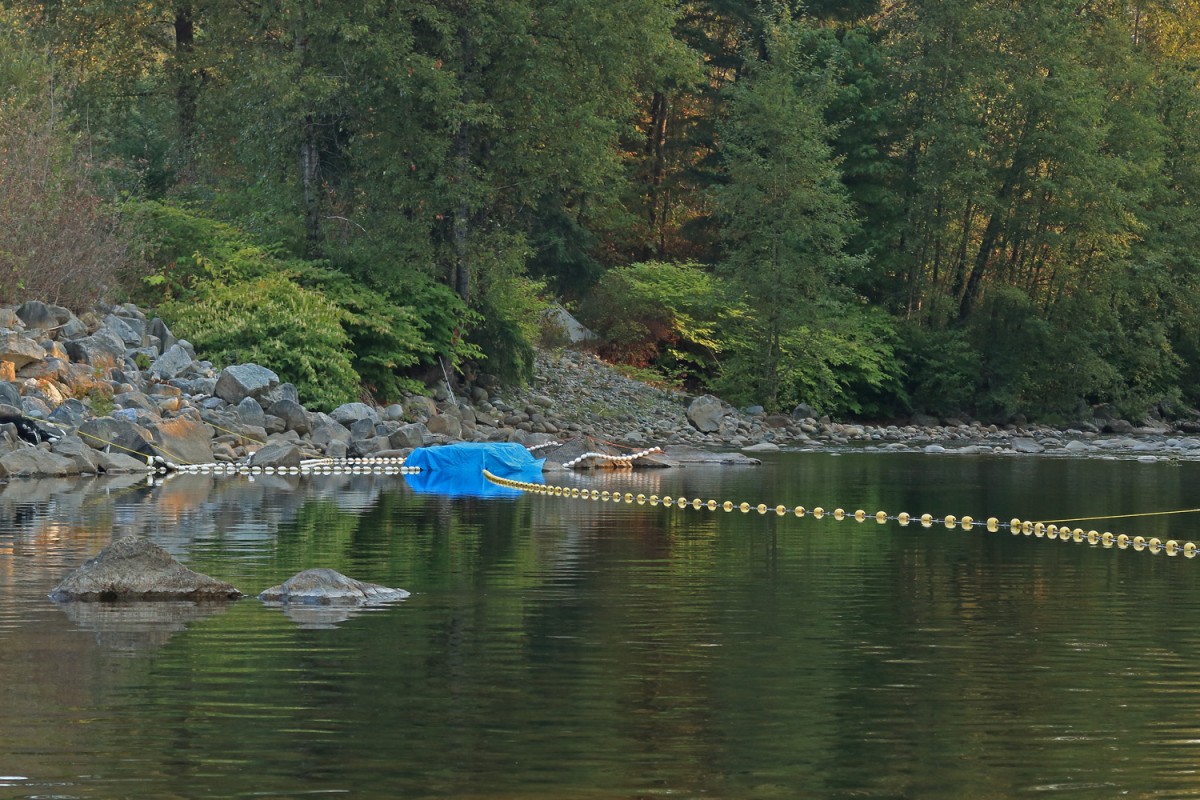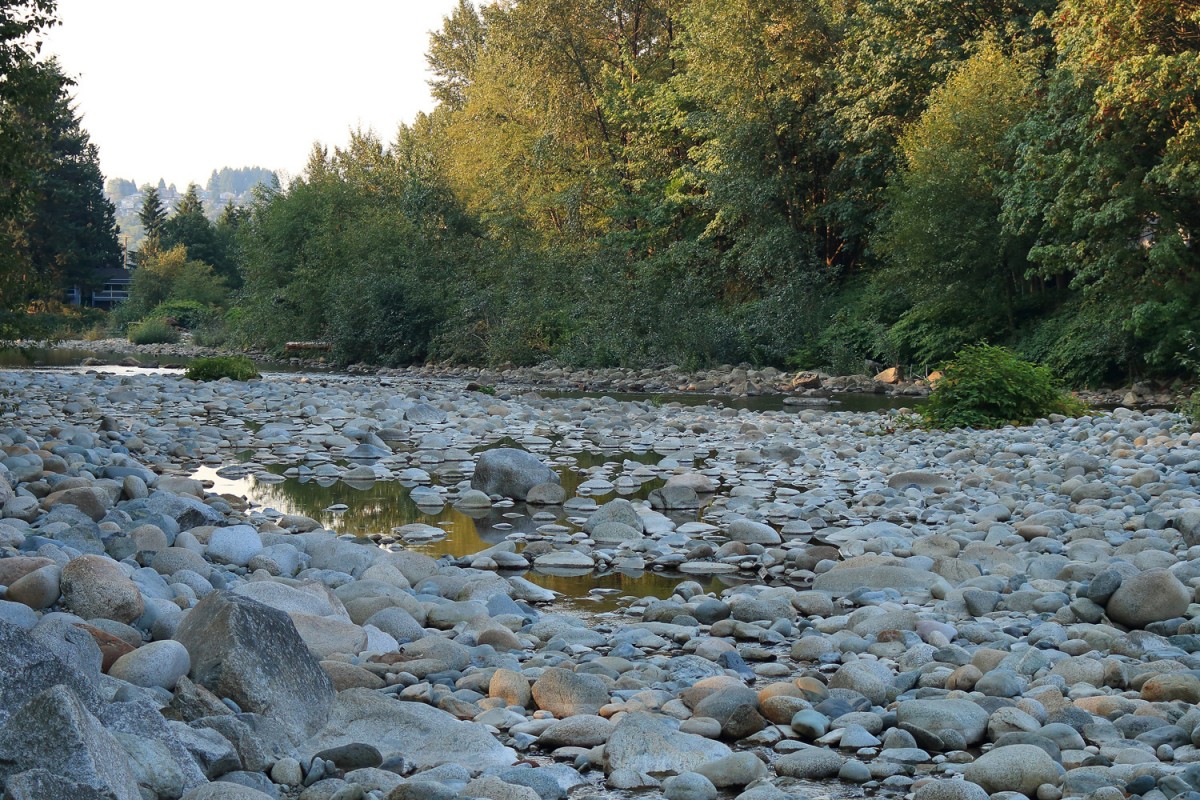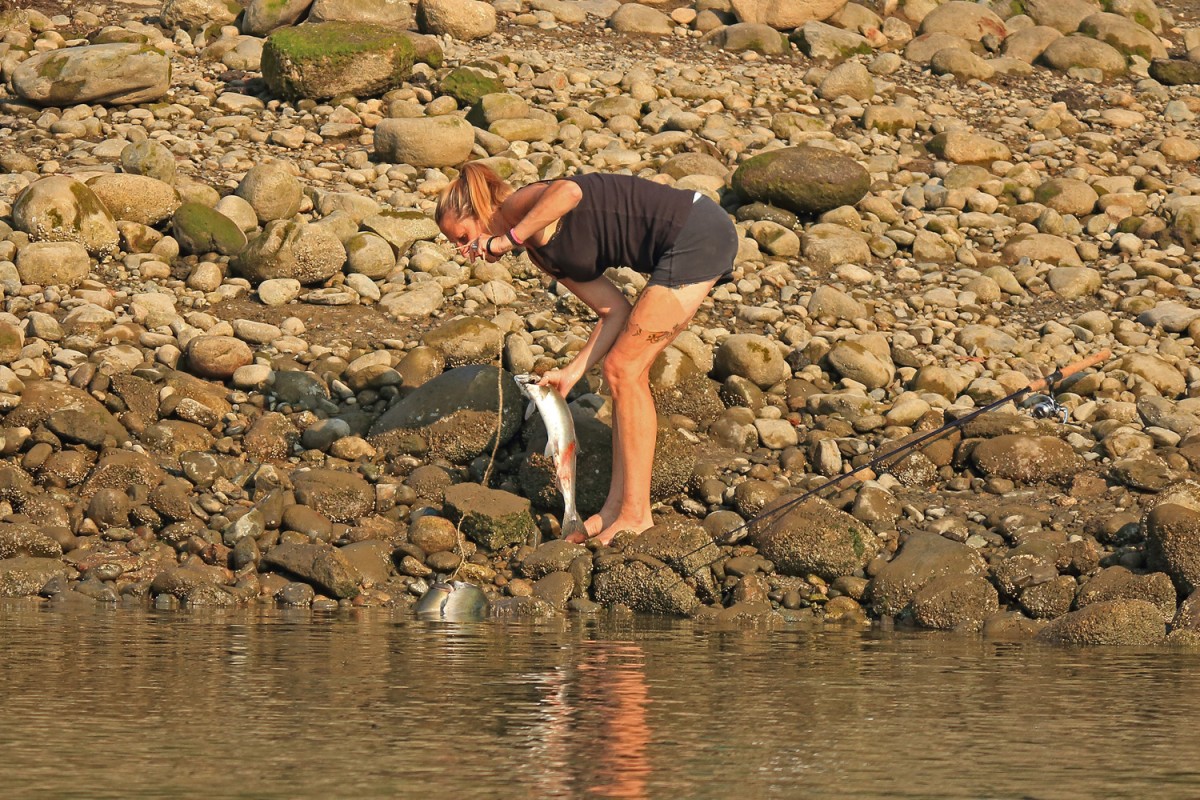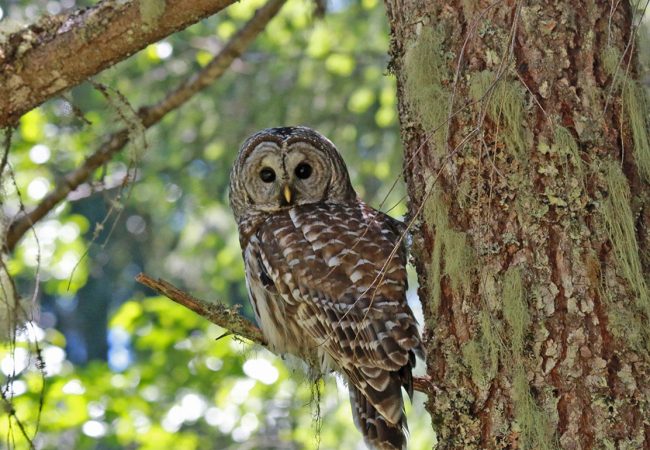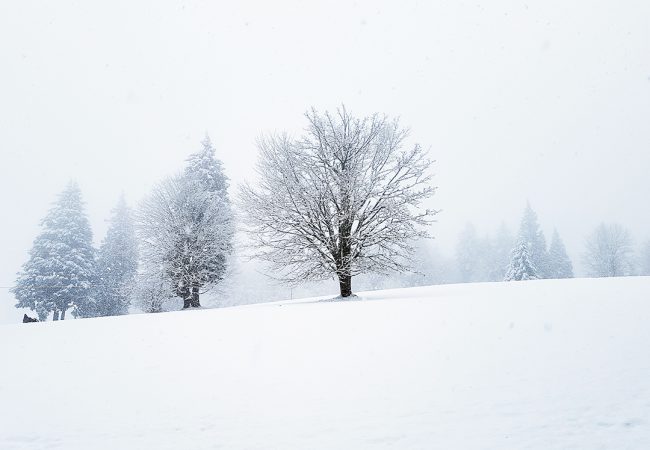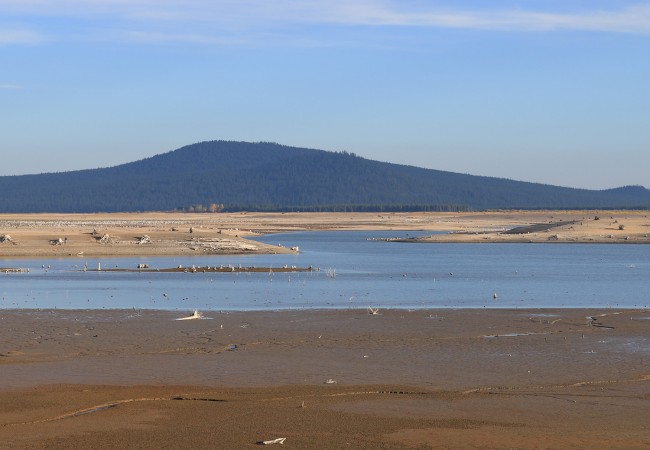Owl sightings are about as rare as our birthdays. Probably…
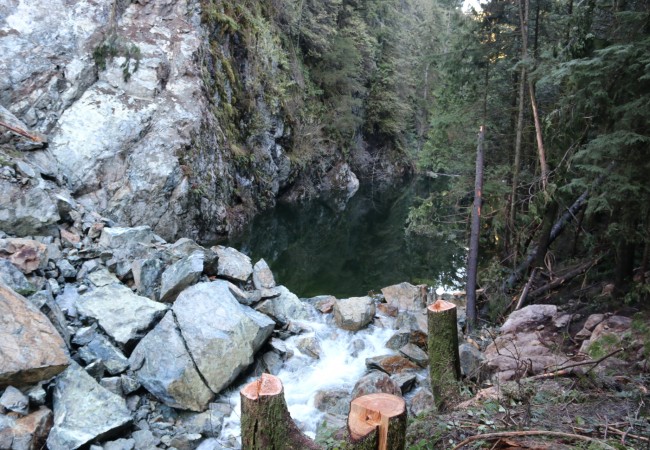
Last Rites for Seymour River Salmon and Steelhead?
In December of last year, a massive rock slide rumbled into the Seymour River in North Vancouver, BC. The slide was big enough (estimated at 50,000 cubic meters) to block the passage of migrating salmon and steelhead. The upper river, above the rock fall, contains nearly all the productive spawning water. As far as anyone can tell, zero fish are getting through to spawn.
The image above is misleading, as the large boulder in the foreground sits far below the tree stumps and is about the size of a house. But the photo provides some idea of the obstacle faced by upstream-bound salmon and steelhead.
Surely a bit of dynamite would solve the problem. If we can carve a subway beneath the streets of Vancouver, we can blow up a few rocks to let salmon and steelhead through to spawn–especially when the survival of the river’s salmon and steelhead is at stake.
But alas, it ain’t so simple. According to Sandie Hollick-Kenyon of Fisheries and Oceans Canada, blowing up the rocks presents a number of very difficult obstacles.
“We know it can be done,” she says. “But there are huge issues related to safety and liability, not to mention money. So many things have to be taken into account, including the large release of water that would result, the threat of triggering a new slide and keeping the public safe while we do it.”
She adds that pressure from the public might help decision-makers at Fisheries and Oceans Canada find the money and resources to attack the problem. Concerned parties should write directly to the Honourable Gail Shea, Minister of Fisheries and Oceans Canada: gail.shea@parl.gc.ca or simply phone toll free 1-800-224-0018.
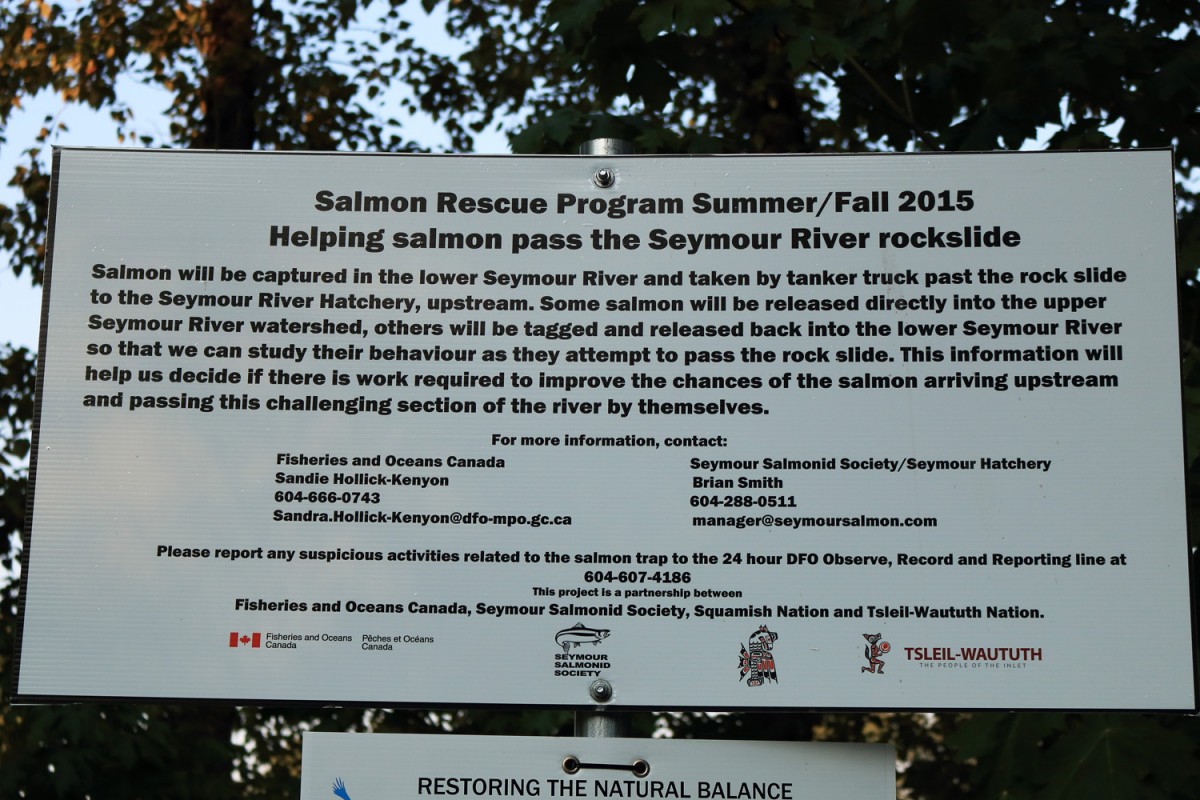
A coalition of private and government agencies is working hard to help salmon and steelhead survive until a solution–if there is one–can be found.
In the meantime, a joint effort between the Seymour Salmonid Society, Fisheries and Oceans Canada, Metro Vancouver, Squamish Nation, Tsleil Waututh Nation and North Van District is attempting an emergency rescue effort to capture returning salmon and steelhead in the lower river. Large nets and a capture trap have been installed near the river mouth, downstream from the Seymour Parkway bridge. These are scheduled to operate until December 2015, as long as water levels don’t get too high. Captured fish will be placed in transfer tanks and and get a free ride to the upper river.
Clearly the nets and traps represent a stopgap measure to make sure the fish runs survive. According to Hollick-Kenyon, various agencies are also working together to learn more about fish passage. “We need to prove conclusively that no fish are getting up or down the river,” she says. “We have no hard data yet. So we’re tagging smolts headed downstream and a few adults headed upstream with radio tags to follow their progress.”
In August, the river had reached record or near-record low levels. Few fish were moving upriver in the warm trickle of water that remained.
The low water didn’t stop some determined anglers from putting meat on the table. We observed a number of people snagging pink and coho salmon at the Seymour River mouth. This is a shameful practice, and it’s unfortunate that law enforcement resources are stretched too thin to patrol spots like this more frequently.
We watched the woman in the above photo snag and land this pink salmon, not long after her partner had snagged and landed another (and added it to a stringer with two other salmon). If you see activity like this, report it to the authorities. These fish are under enough stress as it is.
The Seymour Salmonid Society is leading the effort to save the Seymour’s salmon and steelhead. The society’s website includes news and updates about the rockslide and ongoing efforts to get fish up and down the river.

